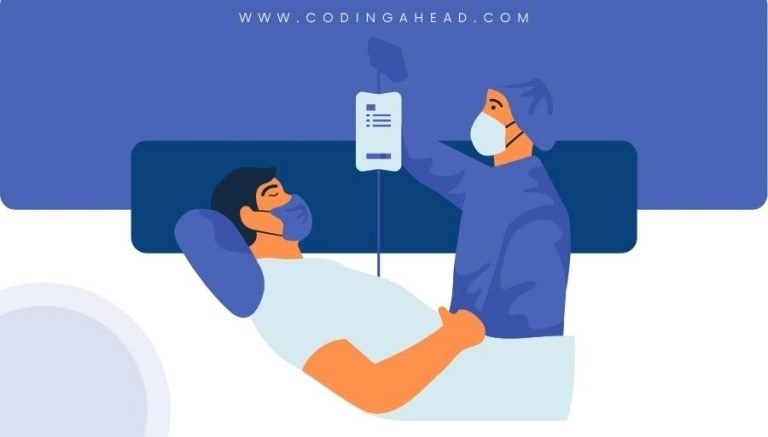How To Use CPT Code 73522
CPT 73522 describes the radiologic examination of the hips, bilateral, with pelvis when performed, using three to four views. This article will cover the description, procedure, qualifying circumstances, appropriate usage, documentation requirements, billing guidelines, historical information, similar codes and billing examples.
1. What is CPT Code 73522?
CPT 73522 is used to describe a radiologic examination of the hips, bilateral, with pelvis when performed, using three to four views. This code is used when the healthcare provider takes X-ray images of both hip bones from different angles to check for fractures, swelling, or other reasons for pain in the hip area. The examination may also include the entire pelvis, which consists of the hip bone, sacrum, and coccyx.
2. Official Description
The official description of CPT code 73522 is: ‘Radiologic examination, hips, bilateral, with pelvis when performed; 3-4 views.’
3. Procedure
- The patient is positioned on an X-ray table.
- The healthcare provider takes three to four X-ray images of both hip bones from different directions or angles.
- The examination may include the entire pelvis, which consists of the hip bone, sacrum, and coccyx.
- The X-ray images are used to check for fractures, swelling, or other reasons for pain in the hip area.
4. Qualifying circumstances
CPT 73522 is performed when there is a need to examine the hips and pelvis for fractures, swelling, or other reasons for pain. It is typically done when a patient presents with hip pain or suspected hip-related issues. The procedure requires three to four X-ray views of both hip bones, and may include the entire pelvis.
5. When to use CPT code 73522
CPT code 73522 should be used when a healthcare provider performs a radiologic examination of the hips, bilateral, with pelvis when performed, using three to four views. This code is appropriate when the provider takes X-ray images of both hip bones to evaluate for fractures, swelling, or other reasons for hip pain. It is important to ensure that the documentation clearly describes each view taken and the patient’s body position during the examination.
6. Documentation requirements
To support a claim for CPT 73522, the healthcare provider must document the following information:
- Reason for the examination, such as hip pain or suspected hip-related issues
- Number of views taken for each hip and whether the entire pelvis was included
- Date and time of the examination
- Body position and projection of the X-ray images
- Findings or abnormalities observed during the examination
- Signature of the healthcare provider performing the examination
7. Billing guidelines
When billing for CPT 73522, ensure that the examination includes three to four views of both hip bones, with or without the entire pelvis. It is important to accurately document the number of views taken and any additional findings or abnormalities observed during the examination. Modifier 26 should be appended to the radiology code if reporting only the physician’s interpretation, and modifier TC should be appended if reporting only the technical component. However, payer policies may exempt hospitals from appending modifier TC. If the same provider renders both the professional and technical components, no modifier is necessary.
8. Historical information
CPT 73522 was added to the Current Procedural Terminology system on January 1, 2016. There have been no updates to the code since its addition.
9. Examples
- A patient presents with hip pain, and the healthcare provider performs a radiologic examination of the hips, bilateral, with pelvis when performed, using three to four views. The X-ray images reveal a fracture in the left hip bone.
- A patient with a history of hip trauma undergoes a radiologic examination of the hips, bilateral, with pelvis when performed, using three to four views. The X-ray images show no signs of fractures or abnormalities.
- A professional athlete complains of hip discomfort, and the healthcare provider orders a radiologic examination of the hips, bilateral, with pelvis when performed, using three to four views. The X-ray images reveal inflammation in both hip joints.
- An elderly patient with osteoporosis undergoes a radiologic examination of the hips, bilateral, with pelvis when performed, using three to four views. The X-ray images show signs of degenerative changes in the hip joints.
- A patient involved in a car accident presents with hip pain, and the healthcare provider performs a radiologic examination of the hips, bilateral, with pelvis when performed, using three to four views. The X-ray images reveal a dislocation in the right hip joint.
- A young athlete complains of hip instability, and the healthcare provider orders a radiologic examination of the hips, bilateral, with pelvis when performed, using three to four views. The X-ray images show no signs of abnormalities or instability.
- A patient with a history of hip surgery undergoes a radiologic examination of the hips, bilateral, with pelvis when performed, using three to four views. The X-ray images reveal proper alignment and healing of the hip joints.
- A pregnant patient presents with hip pain, and the healthcare provider performs a radiologic examination of the hips, bilateral, with pelvis when performed, using three to four views. The X-ray images show no signs of fractures or abnormalities.
- An elderly patient with arthritis complains of worsening hip pain, and the healthcare provider orders a radiologic examination of the hips, bilateral, with pelvis when performed, using three to four views. The X-ray images reveal severe degenerative changes in both hip joints.




